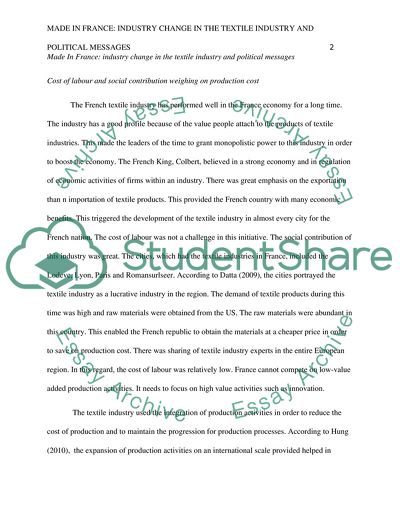Cite this document
(Made In France: industry change in the textile industry and political Research Paper - 1, n.d.)
Made In France: industry change in the textile industry and political Research Paper - 1. https://studentshare.org/macro-microeconomics/1821658-made-in-france-industry-change-in-the-textile-industry-and-political-messages
Made In France: industry change in the textile industry and political Research Paper - 1. https://studentshare.org/macro-microeconomics/1821658-made-in-france-industry-change-in-the-textile-industry-and-political-messages
(Made In France: Industry Change in the Textile Industry and Political Research Paper - 1)
Made In France: Industry Change in the Textile Industry and Political Research Paper - 1. https://studentshare.org/macro-microeconomics/1821658-made-in-france-industry-change-in-the-textile-industry-and-political-messages.
Made In France: Industry Change in the Textile Industry and Political Research Paper - 1. https://studentshare.org/macro-microeconomics/1821658-made-in-france-industry-change-in-the-textile-industry-and-political-messages.
“Made In France: Industry Change in the Textile Industry and Political Research Paper - 1”. https://studentshare.org/macro-microeconomics/1821658-made-in-france-industry-change-in-the-textile-industry-and-political-messages.


